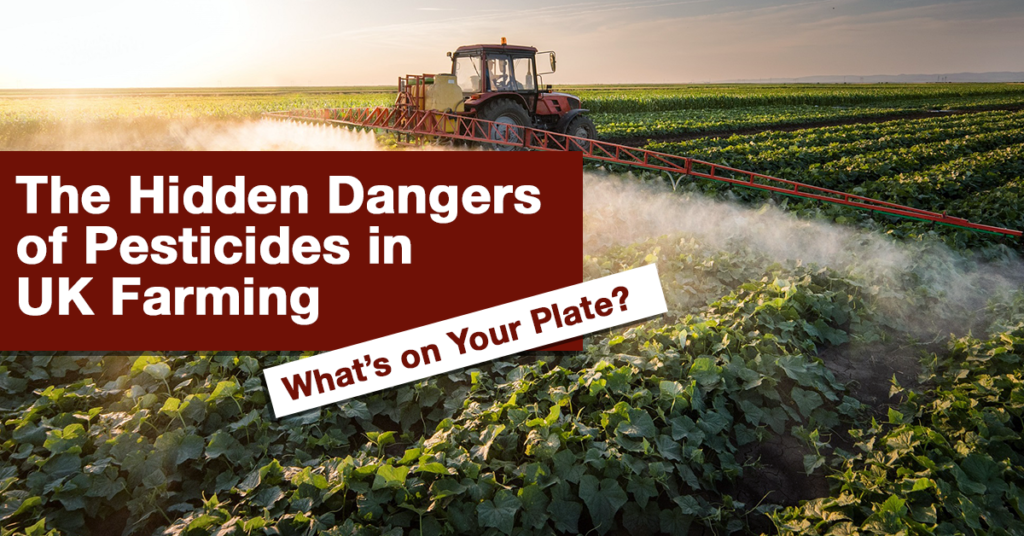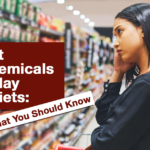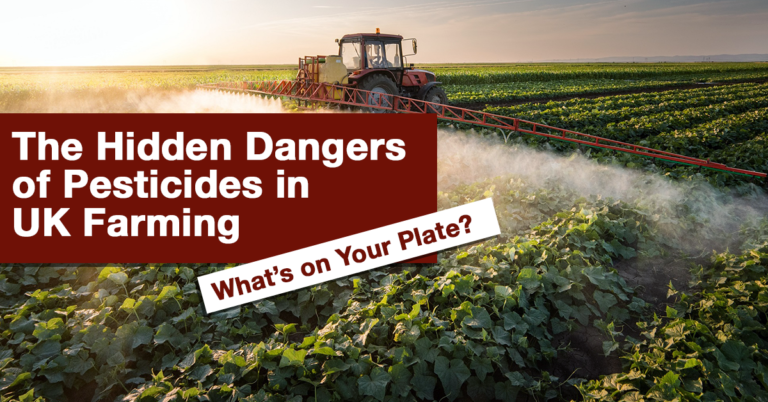
Pesticides have long played a critical role in modern agriculture, helping farmers manage pests and protect crops. However, the use of chemicals in farming raises significant concerns about the safety of the food we consume, particularly when it comes to pesticide residues on fruits and vegetables. In the UK, pesticide regulations are relatively stringent, yet the risks associated with certain chemicals remain a pressing issue. Among these, chlorpyrifos, a once widely used pesticide, continues to spark debate due to its potential health risks. This article investigates the prevalence of pesticides in UK farming, the associated health hazards, and offers practical advice for reducing exposure to harmful residues.
The Role of Pesticides in UK Farming
In the UK, pesticides are extensively used to protect crops from a variety of threats, including insects, weeds, and fungi. The Food and Environment Research Agency (FERA) reports that the UK’s agricultural sector applies pesticides to around 98% of its arable crops. These chemicals help ensure the production of high yields and maintain the economic viability of the farming industry. However, the widespread use of pesticides also means that residues can often remain on the fruits and vegetables we consume.
UK regulations, governed by the Health and Safety Executive (HSE) and the Food Standards Agency (FSA), set maximum residue levels (MRLs) to ensure that pesticide levels on food do not pose a threat to human health. Nonetheless, even when these levels fall within the legally permissible range, concerns about long-term exposure to multiple chemicals persist.
Chlorpyrifos: A Case Study of Concern
Chlorpyrifos, an organophosphate pesticide, has been under scrutiny for several years due to its potentially harmful effects on human health. Although it was banned for use on edible crops in the UK in 2016, its prior prevalence and persistence in the environment mean that it remains a topic of concern. This chemical has been linked to neurodevelopmental issues, particularly in children. Research has shown that exposure to chlorpyrifos, even at low levels, can affect brain development, leading to cognitive deficits and behavioural problems.
The danger of chlorpyrifos lies in its ability to inhibit acetylcholinesterase, an enzyme essential for the proper functioning of the nervous system. In children, whose nervous systems are still developing, this can lead to significant and lasting damage. While the UK has taken steps to reduce the risk by banning its use in food production, residues may still be present on imported produce or persist in the soil for extended periods.
Health Risks of Pesticide Residues
The health risks associated with pesticide residues are not limited to chlorpyrifos. A wide range of pesticides, including neonicotinoids and fungicides, can have adverse effects on human health. Pesticides can disrupt endocrine function, potentially leading to hormone-related issues, including reproductive problems and developmental delays. Additionally, prolonged exposure to pesticides has been associated with an increased risk of certain cancers, such as non-Hodgkin lymphoma and leukaemia.
A particular concern is the cumulative effect of consuming multiple pesticide residues, known as the “cocktail effect.” While individual chemicals may be present at safe levels, their combined impact is less well understood and could pose a greater risk than regulators currently recognise.
Reducing Exposure: Organic Choices and Washing Techniques
For consumers concerned about pesticide exposure, there are several steps that can be taken to reduce risk. One of the most effective ways to minimise pesticide intake is to opt for organic produce. Organic farming standards prohibit the use of most synthetic pesticides, and although organic crops are not entirely pesticide-free, the chemicals used are generally considered to be less harmful to human health.
However, organic produce can be expensive and is not always accessible to everyone. For those who cannot always buy organic, thorough washing of fruits and vegetables can help remove pesticide residues. Here are some practical washing techniques to reduce exposure:
- Rinse Under Cold Water: This basic step can remove some surface residues. Scrubbing produce with a brush can further enhance removal, particularly for firmer items like apples or potatoes.
- Soak in Vinegar or Baking Soda Solutions: Studies suggest that soaking fruits and vegetables in a mixture of water and either vinegar or baking soda can effectively reduce pesticide residues. Soak for 15-20 minutes before rinsing under cold water.
- Peeling and Trimming: For certain produce, such as cucumbers or potatoes, peeling the skin can help reduce pesticide exposure, although this also removes some of the nutrients.
- Avoid Pre-Packaged or Pre-Cut Produce: These items are more likely to have been exposed to higher levels of pesticides to preserve freshness, as pre-cut fruits and vegetables tend to spoil more quickly.
Sustainable Practices: Supporting a Healthier Food System
In addition to individual efforts to reduce pesticide exposure, consumers can also support sustainable agricultural practices that prioritise environmental health and minimise pesticide use. One way to do this is by supporting local farms that follow Integrated Pest Management (IPM) practices. IPM focuses on using natural predators, crop rotation, and other non-chemical methods to control pests, reducing the need for harmful pesticides.
Consumers can also advocate for stronger regulations on pesticide use and greater transparency about the chemicals used in food production. By demanding better labelling and supporting initiatives that encourage sustainable farming practices, individuals can play a role in shaping a safer, healthier food system.
Conclusion
While the use of pesticides in UK farming is necessary for crop protection, the risks associated with pesticide residues on fruits and vegetables cannot be ignored. Chemicals like chlorpyrifos have highlighted the dangers of certain pesticides, and though the UK has taken steps to mitigate these risks, concerns about long-term exposure remain. By making informed choices—whether through purchasing organic produce, adopting effective washing techniques, or supporting sustainable farming practices—consumers can take proactive steps to reduce their exposure to harmful pesticide residues and contribute to a healthier future for all.
Sources
- Food and Environment Research Agency. “Pesticide Usage Statistics.” FERA, www.fera.co.uk.
- Health and Safety Executive. “Pesticides: Maximum Residue Levels (MRLs).” HSE, www.hse.gov.uk.
- European Food Safety Authority. “Chlorpyrifos: Health Concerns and Regulatory Actions.” EFSA, www.efsa.europa.eu.
- Burch, Jonathan. “The Risks of Pesticide Residues on Fruits and Vegetables.” Journal of Environmental Health, vol. 82, no. 2, 2020, pp. 41–48.
- Kim, J., et al. “Effectiveness of Washing and Peeling in Reducing Pesticide Residue Exposure.” Food and Chemical Toxicology, vol. 132, 2019, pp. 109–116.
- Soil Association. “The Benefits of Organic Farming.” Soil Association, www.soilassociation.org.















